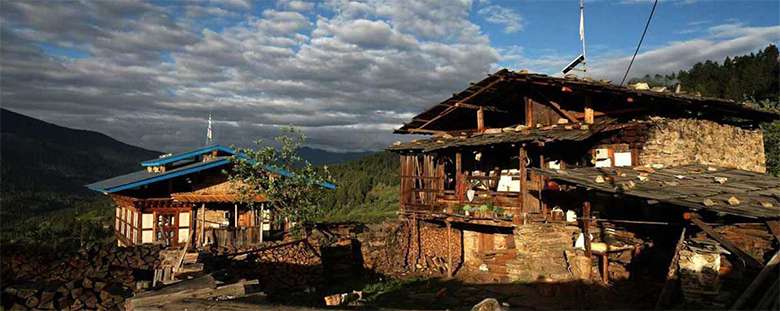

Ngawang Namgyal, popularly known as the Punakha Dzong, is Bhutan’s second-oldest and second-largest dzong. It was constructed in 1637 under the direction of the first Zhabdrung Rinpoche. The Rangjung Kasarpani, the sacred remains of Ngawang Namgyal and the tertön Pema Lingpa, as well as other relics from the southern Drukpa Lineage of the Kagyu school of Tibetan Buddhism are all housed in Punakha Dzong. Punakha Dzong has become the main draw of the former capital of Bhutan due to the dzong’s reputation as being the most exquisite and spectacular edifice in all of Bhutan. The Palace of Great Bliss is what the term Pungthang Dewachen Phodrang in Bhutanese means.
Sited on the small island amidst the confluence of Mo Chhu and Pho Chhu rivers, Punakha Dzong is the epitome of grandeur and luxuriance. The first king of modern Bhutan, the 3rd Gyalpo Jigme Dorji Wangchuck was crowned in Punakha Dzong along with the wedlock ceremony of the 5th King, Jigme Khesar Namgyal Wangchuck. The grandiose Punakha Dzong has withstood the much seen and unseen damage caused by fire and earthquake.
Visitors can enjoy the historic architecture, which has survived despite having been devastated by the earthquake six times. Awe-inspiring statues of the Buddha, who was accompanied by the Guru Padmasambhava and Zhabdrung Ngawang Namgyal, are also painted on the walls and ceiling of Punakha Dzong. The philosopher Padmasambhava foretold that “A person named Namgyal will arrive at a hill that looks like an elephant,” according to popular Bhutanese folklore.
Made with only natural components, Punakha dzong is unusual in that it has three docheys instead of the usual two. The first (northern) courtyard is for administrative functions and houses a huge white chorten and bodhi tree. In the far left corner are a collection of stones and a shrine to the Tsochen, queen of the naga (snake spirits), whose image is to the side. The second courtyard houses the monastic quarters and is separated from the first by the utse. In the southernmost courtyard is the temple where the remains of the terton, Pema Lingpa, and Zhabdrung Ngawang Namgyal are preserved.
The Zhabdrung passed away in Punakha Dzong, and his body is still kept in the 1995-rebuilt Machey Lhakhang (machey meaning “holy embalmed body”) today. The “hundred-pillar” assembly hall is located at the southern end (which actually has only 54 pillars). The second Druk desi commissioned the magnificent murals, which portray the life of Buddha. One of Bhutan’s most prized artifacts, an image of Chenresig, is maintained in the Tse Lhakhang in the Punakha Dzong’s upper courtyard. The Zhabdrung brought it from Tibet to Bhutan, and it plays a significant role in Punakha’s well-known Dromchoe festival.
Visitors can experience peace when strolling through Punakha Dzong’s grand hall and taking in the colorful murals covering the pillars. The sight of the white-washed dzong shining under the lights reflected from the meandering mountain stream with the backdrop vista of majestic Bhutan Hill has captured the hearts of many tourists, making Punakha Dzong a must-visit site of Bhutan. Punakha Dzong is surrounded by lush juniper trees.
The finest seasons to visit Punakha Dzong are thought to be the spring season from March to May and the fall season from September to November. Tourists can take advantage of the pleasant weather and unspoiled beauty of the nearby valley at this time of year, which is riotously colored with flowering flowers.
Quick Enquiry